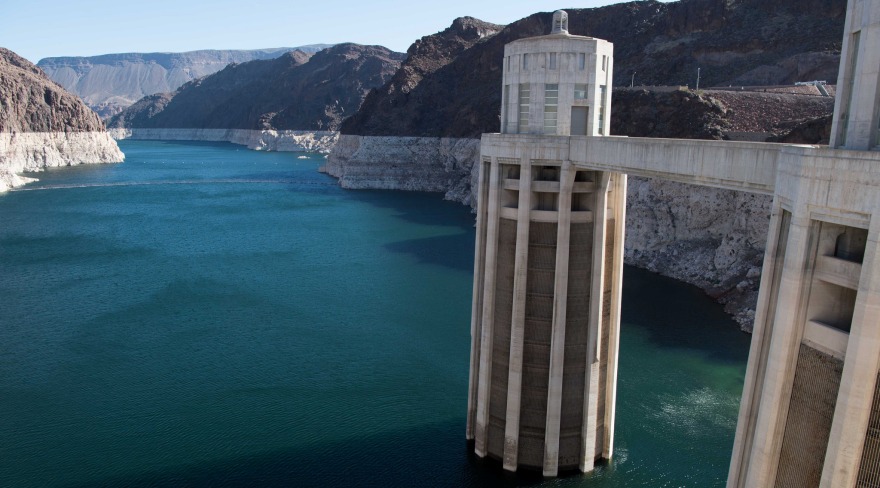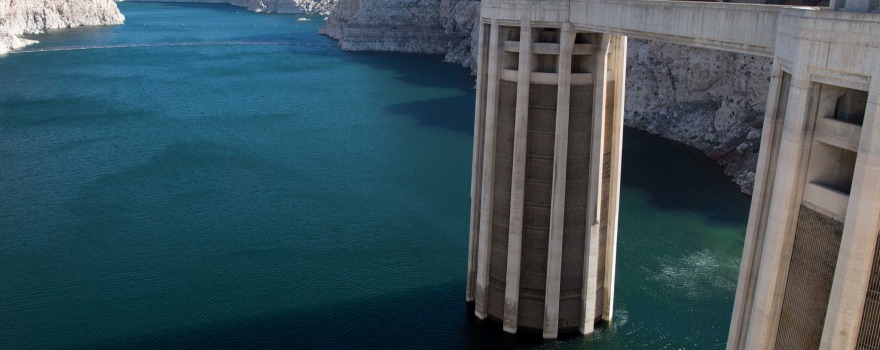 “If there is no Drought Contingency Plan, we don’t want to leave potentially half a million acre-feet or more locked up in Lake Mead if we go into shortage,” says General Manager Jeff Kightlinger
“If there is no Drought Contingency Plan, we don’t want to leave potentially half a million acre-feet or more locked up in Lake Mead if we go into shortage,” says General Manager Jeff Kightlinger
At today’s meeting of the Water Planning & Stewardship Committee, Metropolitan officials said that with no Drought Contingency Plan in place (Arizona being the hold out), they are beginning to draw down their storage in Lake Mead.
Bill Hasencamp, manager of Colorado River Resources, began by noting that last year was one of the wettest for the California deserts, with the Palo Verde and Imperial Valley areas getting 600% of average precipitation. “As a result, our supplies at the end of the year went up more much than we anticipated, and we ended up storing 120,000 acre-feet of water in our ICS account in Lake Mead,” he said. “So as a result, we have about 620,000 acre-feet of ICS in Mead. We still have to go through the numbers, but that was the most amount of water we’ve ever had stored in Lake Mead at one time, and that’s almost about 10 feet water in Lake Mead that has Metropolitan’s name on it.”
Turning to the Drought Contingency Plan, Mr. Hasencamp noted that all the agencies in California have approved the California implementing agreements; they are still waiting to approve the interstate agreements based on the progress in Arizona. He noted that they have had discussions with Arizona, and it looks like they will need another month or two.
“At the CRUA conference in December, the Commissioner of Reclamation Brenda Burman gave the states a January 31 deadline to essentially get the agreements negotiated before she’ll start to take action on her own plan, a Plan B for the states if there is no drought plan, so the states took that to heart and they’ve been working hard,” said Mr. Hasencamp. “Hopefully by the February report, we’ll be able to report where we are, and maybe we’ll be ready to complete them by then.”
General Manager Jeff Kightlinger noted that a portion of water that has accrued towards Metropolitan might be conserved water that should be credited to IID, so they will be working with them on that.
“I did direct staff to go to a 6 pump flow starting immediately in January so that we will have the option of pulling our ICS down as the year goes on,” he said. “If there is no Drought Contingency Plan, we don’t want to leave potentially half a million acre-feet or more locked up in Lake Mead if we go into shortage. So we will be relocating, or at least positioning ourselves to relocate that storage into Southern California. If the Drought Contingency Plan does get executed, we can back of pumping as the year goes along and leave that in Lake Mead, but by acting now, we will have the flexibility to pull that down, so we are currently at a 6 pump flow and relocating some of that storage.”
——————————————–
Sign up for daily email service and you’ll always be one of the first to know!
- Sign up for daily emails and get all the Notebook’s aggregated and original water news content delivered to your email box by 9AM. Breaking news alerts like this one, too. Sign me up!
 Maven’s Notebook
Maven’s Notebook
constantly watching over the world of California water


